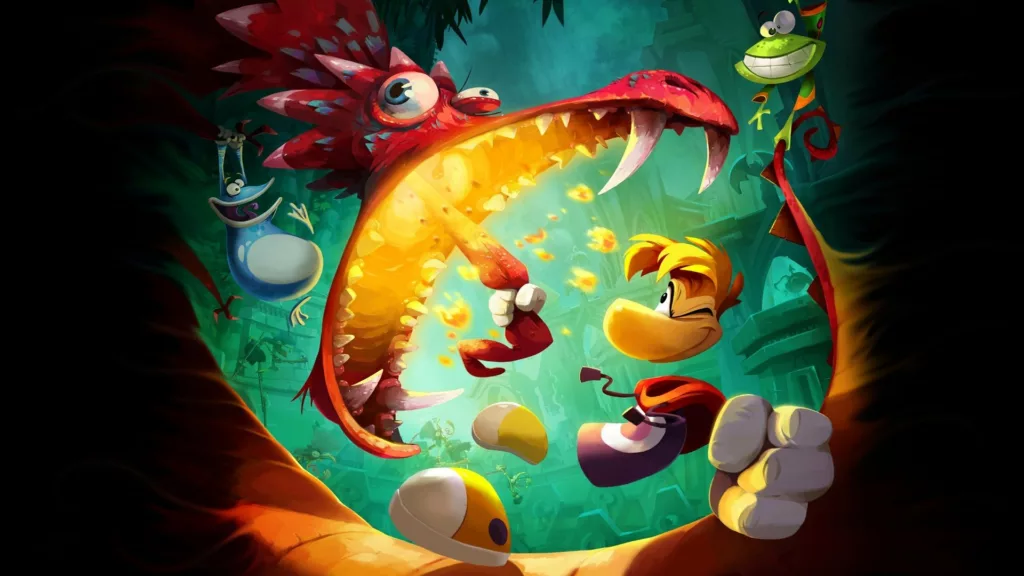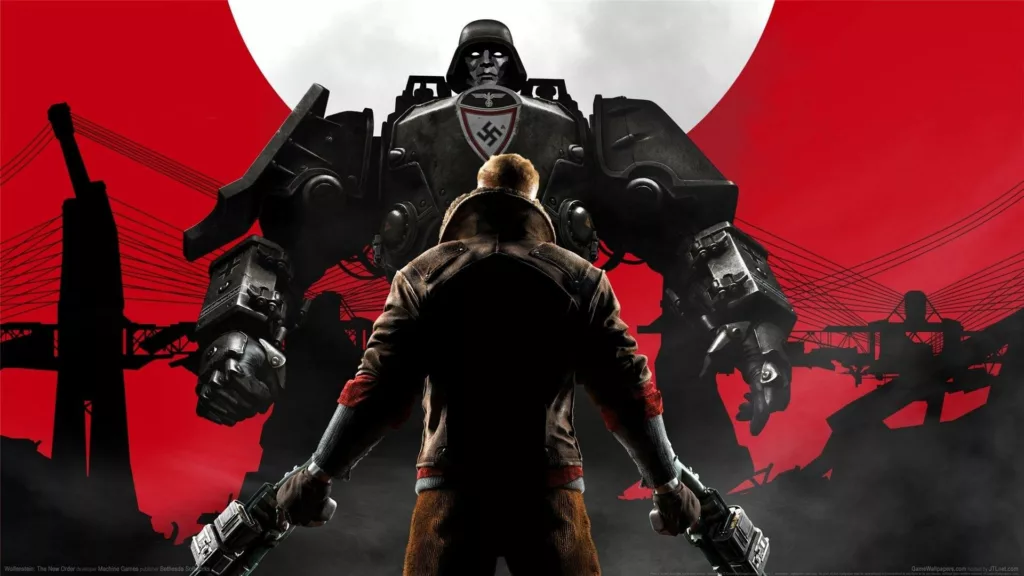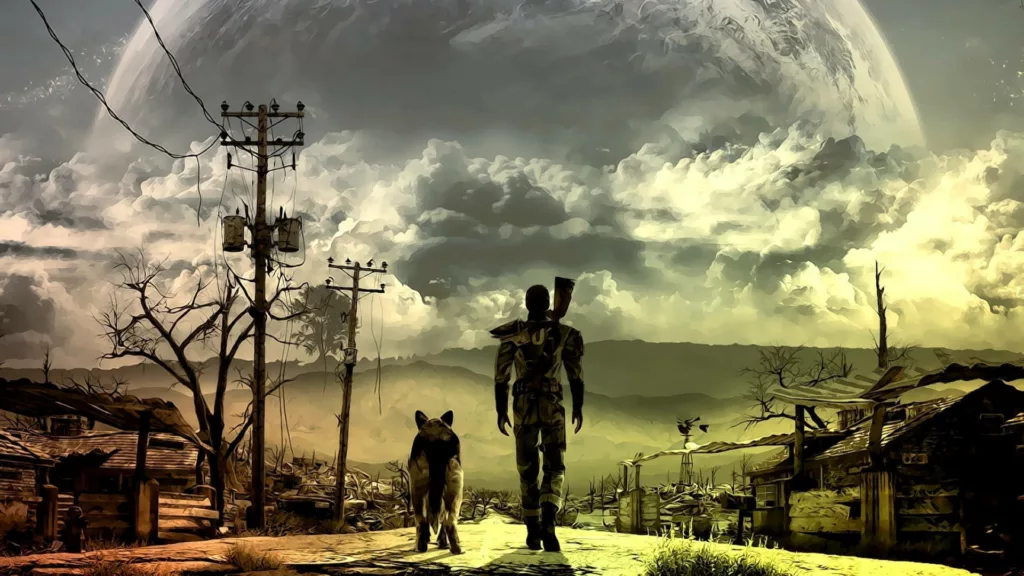The ripples of innovation never cease to touch the shore of the gaming industry. In the constantly shifting sands of this interactive entertainment domain, adaptation is more than a luxury – it’s a necessity for survival. In a realm where pixels evolve into lifelike figures and side-scrolling adventures open up into three-dimensional epics, the power of depth becomes not just a visual enhancement, but an instrument of resurrection.
This narrative exploration delves into the transformative journeys of five iconic gaming series: Rayman, Wolfenstein, Fallout, Assassin’s Creed, and Grand Theft Auto. We will unravel how their foray into 3D technology breathed new life into their gameplay, shaped their narratives, and kept them in the pulse of an ever-evolving industry.
Each of these franchises weaves a unique tale of evolution, showcasing how they effectively rode the wave of technological advancement, thus ensuring their spot in the pantheon of gaming. Through the lens of these franchises, we illustrate the power of depth, and how embracing the allure of the third dimension has the potential to resurrect even the most seasoned game series.
Rayman
When Rayman made his debut back in 1995, it came across as a classic, side-scrolling arcade game that painted a picture of a fantastical world, one that drew inspiration from the cinematic universe of “Dark Crystal”. In this vibrant and mystical world, Rayman, the game’s protagonist, had a singular mission. He had to traverse complex platforms and combat adversaries using his unique fist, which he utilized in a manner reminiscent of a firearm.
Despite the commercial triumph of Rayman, it wasn’t completely immune to criticisms. Many gamers and critics noted the game’s adherence to established norms rather than paving the way for fresh, innovative gameplay mechanics. As the landscape of the gaming industry started shifting, marked by Nintendo’s introduction of the ground-breaking, three-dimensional Super Mario 64, the creators of Rayman realized the need to evolve their game to keep pace with the competition.
Hence, Rayman swiftly transitioned to the captivating world of 3D gaming. This shift was greeted with widespread applause, helping the Rayman series to claw back lost ground and effectively compete with its peers. However, as the fervor around the 3D gaming revolution started to wane and 3D technology was no longer the predominant factor luring gamers to Rayman, the brand found itself grappling with an identity crisis.
The subsequent two editions of Rayman decided to revisit their roots, adopting 2D graphics once again and revitalizing the old, beloved gameplay formula. It was a fascinating journey to witness – the brand first utilized the power of the third dimension to reinvent itself and then sought solace in the comforting arms of nostalgia. In a sense, the story of Rayman has traced a full circle.
At present, the Rayman franchise may not be in the limelight as it once was, but its legacy is far from forgotten. Many gamers believe that nostalgia, the powerful force that had once breathed new life into the series, might yet again hold the key to its resurrection. As to the question of whether Rayman will return in the guise of a 2D classic or a 3D sensation, only time holds the answer.
Wolfenstein
Before the iconic partnership of the innovative minds, John Carmack and John Romero, took control of the Wolfenstein franchise, there were two predecessors that laid the foundational stones. These original iterations of the game were the products of the creative hub, Muse Software studio, and were specifically designed for the Apple II computer system.
In the first couple of games, Castle Wolfenstein and its sequel, Beyond Castle Wolfenstein, the players were plunged into a high-stakes mission. The task at hand was to strategically wipe out SS guards using a basic arsenal of a pistol and grenades. What was captivating about these early versions of the game was not only the gameplay itself but also the innovative technology used for its time.
The highly esteemed Wolfenstein 3D from id Software, another landmark in the series, wasn’t genuinely a 3D game as you might guess from its title. Instead, it gave the players a masterful illusion of three dimensions. This remarkable illusion of depth was skillfully created by playing with perspectives, thus enhancing the overall gaming experience and making the game seem far more advanced than it actually was.
The genuine leap into the realm of three dimensions, however, came with the subsequent installment, Return to Castle Wolfenstein. This game was brought to life by Gray Matter Interactive in 2001, and yet, the influence of id Software was still evident. They lent their id Tech 3 engine to the project, allowing for an even more immersive experience.
Fast-forwarding to the most recent addition to the franchise, Wolfenstein II: The New Colossus, we see that the game series continued to uphold its legacy of quality gaming. This latest installment served as a reaffirmation that the shift into the 3D dimension was indeed a triumphant move. It has not only allowed the game to stay relevant in the changing landscape of the gaming industry but also confirmed the progressive path the series had chosen to follow.
Fallout
When it comes to the iconic Fallout series, my memories are filled with fondness and admiration, particularly for the initial two installments. To my mind, both of these games, with a special emphasis on the second part, stand tall among the greatest role-playing games (RPGs) ever created. However, in today’s fast-evolving gaming landscape, I find it challenging to revisit them. Their gameplay mechanics, once innovative and intriguing, now seem to have aged significantly, making it less enjoyable to engage with them. Even the immersive storytelling and the compelling post-apocalyptic world that they offer are insufficient to rekindle my enthusiasm.
This gradual decline was fortunately halted when the reins of the Fallout brand were handed over to Bethesda, a group of talented developers who recognized the need for a dramatic overhaul of the series. They had a revolutionary vision for the future of Fallout, a vision that revolved around transporting players into a new, three-dimensional realm.
From 2008 to 2018, Bethesda breathed new life into the franchise, adding parts 3 and 4 to the series along with two additional entries. The first of these was Fallout: New Vegas, which was generally well-received by fans and critics alike. The second, Fallout 76, was a more challenging endeavor, marking the franchise’s first foray into the multiplayer domain. Each of these games fully embraced the 3D gaming world and introduced a plethora of novel features that redefined the gaming experience.
This innovative approach, while highly successful, also led to some divisions within the Fallout community. Fans initially split into two factions, with one group championing the classic 2D gameplay while the other embracing the newer 3D model. Over time, these divisions have deepened, with heated debates still ongoing about the merits and drawbacks of each installment in the series.
Regardless of which faction you might side with, the reality is that Bethesda is unlikely to reverse its course and return to the two-dimensional format. The transition to 3D has allowed Fallout to remain relevant and exciting in the ever-evolving world of video games. It seems certain that the future of this cherished franchise lies in the boundless potential of the third dimension.
Assassin’s Creed
Indeed, it is a fact that every installment of the Assassin’s Creed series, barring the sideline Assassin’s Creed Chronicles, has been a three-dimensional venture. However, it’s fascinating to note that the journey of Assassin’s Creed as we know it today could have taken a dramatically different turn. Originally, the game was conceived as a spin-off of the renowned Prince of Persia series, which itself started as a collection of 2D platformer games.
In 2007, a game by the name of Prince of Persia: Assassins was in its developmental stages. The narrative was built around the titular assassins who were tasked with the noble mission of safeguarding a youthful Persian prince. While this wouldn’t have been the first Prince of Persia game to employ 3D technology, the developers intended to leverage the third dimension’s potential to a significantly greater degree in this game.
A peek into the early concept art reveals that the game was envisioned to incorporate elements of climbing, an idea that later became a hallmark feature in Assassin’s Creed. The strong emphasis on vertical exploration and a shift towards more action-oriented gameplay started taking the game in a distinct direction. These radical changes deviated considerably from the original Prince of Persia formula, giving birth to a completely new and unique franchise: Assassin’s Creed.
In essence, the creation of Assassin’s Creed serves as a captivating tale of how a game’s development process can take unexpected turns. It shows how developers’ openness to adapt and evolve their initial ideas can result in the formation of a groundbreaking and beloved franchise.
Grand Theft Auto
During the time when Rockstar North (then known as DMA Design) was immersed in the development process of the initial Grand Theft Auto (GTA), a rival game was making waves in the gaming industry. Tomb Raider, featuring the charismatic Lara Croft, had emerged as an absolute sensation, captivating players with its high-end three-dimensional graphics and immersive gameplay. In comparison, the initial version of GTA, with its straightforward graphics centered around car thievery, seemed rather underwhelming.
However, the creators of GTA had immense confidence in their work, firmly believing that their game’s strengths lay in its dynamic cityscape, engaging artificial intelligence, and most importantly, its enthralling gameplay mechanics. Their conviction was validated as the game turned out to be a resounding success, a feat that was arguably accelerated by the media frenzy that ensued post its release.
The advent of the PlayStation 2 console was a significant turning point for the GTA series. The developers promptly recognized that the time had come for a radical transformation. After acquiring a license for the RenderWare engine, they embarked on the journey to create GTA III. Their vision for this iteration was not merely to transpose GTA II into the third dimension. Instead, they aspired to redefine the game’s identity, aiming to blur the boundaries between interactive entertainment and cinematic experience.
With that goal in mind, Rockstar revolutionized every aspect of the game. Everything from the camera work to the storytelling technique and the character development was meticulously designed to mirror the grandeur of a blockbuster movie. This new approach was further refined in the subsequent sequels – Vice City, San Andreas, GTA IV, and GTA V. These games pushed the envelope of realism even further, reinforcing the notion that Rockstar’s decision to venture into cinematic territory was indeed the right choice.
Thus, the evolution of GTA serves as a testament to the fact that when game developers are willing to embrace change and continuously innovate, they can successfully keep a franchise relevant and exciting, even in the rapidly evolving world of gaming.




















































Discussion about this post